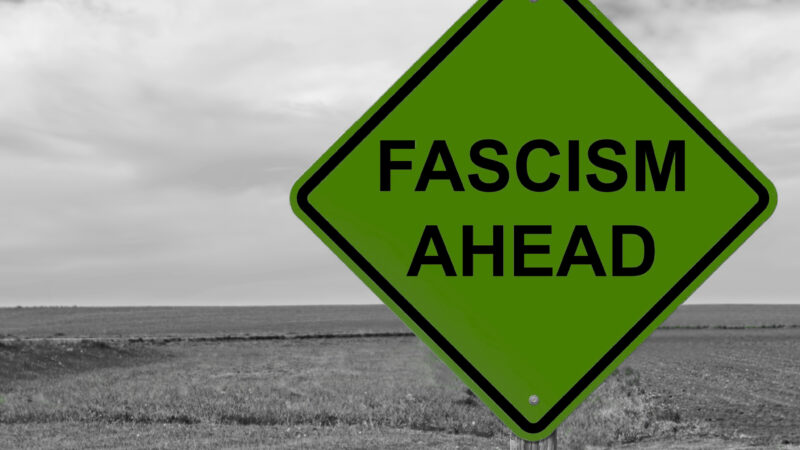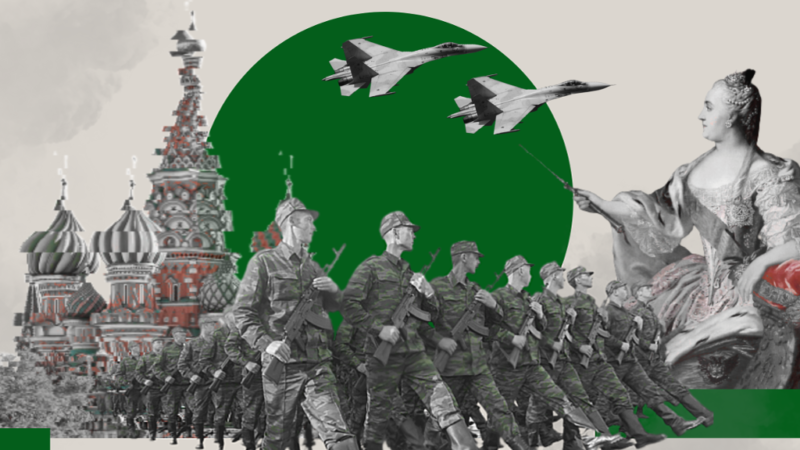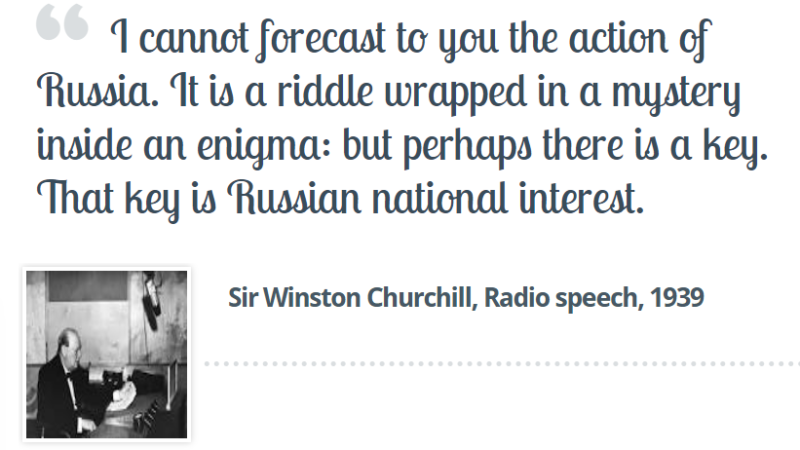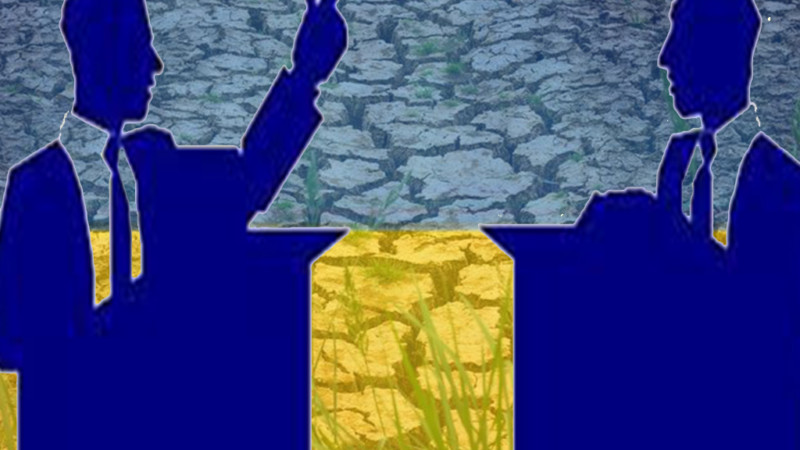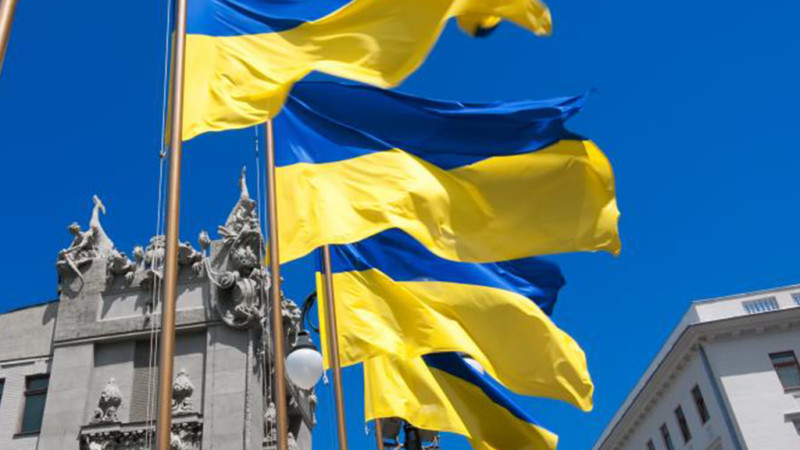The Donbas Conundrum through the Lens of the Nagorno-Karabakh Conflict: A Comparison
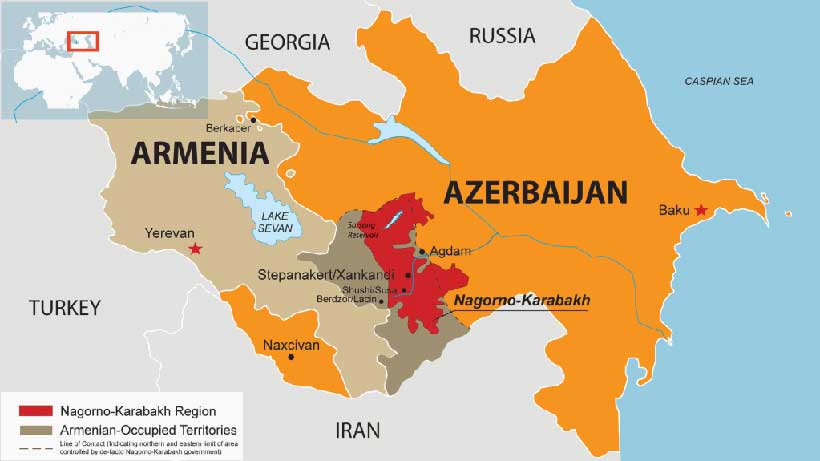
The Donbas Conundrum through the Lens of the Nagorno-Karabakh Conflict: A Comparison
Since the dissolution of the Soviet Union, Moscow’s former region of influence has gained scholarly attention for the large variety of political confrontations that have flared up during the transition to full-fledged democracy. Ethnic rivalries across the internal borders of former Soviet republics sparked a significant number of military confrontations, pushing self-proclaimed entities away from post-Soviet nation building. The Armenian-Azerbaijani rivalry over the Nagorno-Karabakh region remains the oldest conflict that erupted in the post-Soviet space, while the one that has rapidly escalated since 2014 in southeast Ukraine’s Donbas is historically the latest. Unlike Abkhazia and South Ossetia in Georgia, as well as Transnistria [sic] in Moldavia, where military confrontations seem (arguably) to have been frozen, the wars in Donbas and Nagorno-Karabakh have devastated the lives of the thousands of civilians that are trapped in the conflict zones. Since both confrontations tend to heat up easily, they remain the most complicated for Europe, whose geopolitical margins are forcing the Old Continent to deal with multiregional scenarios and the proxies behind them: Southeast Ukraine, Crimea, and the Black and Azov Seas between Ukraine and Russia, and Nagorno-Karabakh, Nakhichevan, and Turkey between Armenia and Azerbaijan.
Given the great degree of similarity shared by Russia’s proxy territories in Eastern Europe and the South Caucasus, security experts and a number of scholars compare the Donbas war in southeast Ukraine and Crimea with the self-proclaimed republics within the de jure Georgian borders. While this comparison certainly draws attention to the geopolitical role and military involvement that the Russian Federation plays in these small-scale entities, few pay as much attention to how the functioning and everyday bitter reality of the self-declared republics provide a lens through which we can analyze the legacy of the Soviet Union.
Thus, a comparative analysis of the wars in Nagorno-Karabakh and the Donbas might not only reveal how profoundly the Soviet era left its mark on Eastern Europe, it might also clearly expose the interwoven phenomena of corruption, vested interests, and clan rivalries that have sabotaged the transition of Eastern Europe to a wealthier region of full-fledged democracies.
Fabricating the mythscape: The pitfall of ‘strategic essentialism’
Analyzing the self-declared republics in the post-Soviet space leads us to attempt investigating the subtle mechanisms applied to mobilize of certain segments of their societies and dig into parallel fabrications of images of enmity ascribed upon the respective “other.” In both Donbas and Nagorno-Karabakh, such a twofold phenomenon transpired in times of crisis and political uncertainty—namely, in 2013–14 and 1988, respectively, when historical events and geography came to be contested and potentially altered. While the self-proclamation of the People’s Republics of Donetsk and Luhansk (DNR and LNR, respectively) occurred following upon the events of the EuroMaidan and Ukraine’s historical turn toward the European Union and embrace of the West as geopolitical vector, the Armenian takeover concerning the Nagorno-Karabakh Autonomous Oblast came about decades earlier, when the Soviet Union was about to collapse.
The mythspace of the Donbas as well as of “Karabakh”—or “Artsakh,” in the eyes of Armenians—was discursively constructed in favour of certain identity signifiers and related historical events to mobilize only one side of the contested realm, similarly to a process that the Indian literary critic and philosopher Gayatri Chakravorty Spivak would refer to as “strategic essentialism” (1). Among others, the myth of common ancestry and common origin, which instrumentally shapes the group’s sense of kinship, shares memories of a common past, interlinked with images of heroes and common culture—a shared language, religion, or customs, a link with a homeland, and a sense of collective solidarity.
In the case of Armenia and Azerbaijan, both communities depict Karabakh as part of their nations—an image of a great family of brothers and sisters of the motherland or fatherland, evoking strong loyalties and vivid attachments. In contrast, the Donbas region is not ethnically based, is mainly divided on the political ground, and is mostly connected to Soviet history and a heroic representation of its local coal miner unions. The capital is Donetsk, and Luhansk is the second-biggest city in the region, wielding great influence along with Severodonetsk and Odesa; all of them are considered to be part of the future, so-called “Novorossiia” (New Russia). Whether intentionally or not, the 2013–14 events in the Donbas revived a Soviet-like mythologization within the region due to the overwhelmingly Russian propaganda that had been discursively injected by the Soviets since the 1920s. A typical example was the manifesto dedicating the Donbas as the “Heart of Russia” that went viral in social media. Meanwhile, capitalizing on the culture-oriented territorial dichotomy—namely, the narrative of the “two Ukraines”—the annexation of the Crimean peninsula is considered to have happened relatively smoothly, with almost no resistance from the Ukrainian government and not much resistance from the local population (Mylogorodska 32), which was perhaps too intimidated by the “little green men” (2).
Against this example, the counter-symbolism of the “EuroMaidan” Revolution of Dignity and its “tent city” in Kyiv’s Independence Square (Ukr: Maidan)—one of the main sites associated with the 1917 October Revolution, for which it was named until October 1990—is not coincidental. The Maidan is indeed the site that embraced the legacy of the perestroika-era student-led “Revolution on Granite”; it represented a gateway away from Soviet colonial rule and a starting point for Ukrainian unity—namely, the “skhid i zakhid razom” movement (lit. ‘east and west together’; 3). Likewise, the Local Council of the Nagorno Karabakh Autonomous Oblast (NKAO) and the square it was on—where thousands of Karabakhi-Armenians gathered and demanded unification with their countrymen in the Armenian SSR—was the spatio-temporal representation of the struggle of all Armenians. As the Armenian political scientist Levon Melik-Shahnazarian opined on the fate of the Nagorno-Karabakh war of 1992–94, “In this case, civilization will win” (4).
In the fabrication of the mythscape, many are left behind and the bigger picture becomes completely distorted. Back in 1991, for example, the Revolution on Granite in Ukraine witnessed the participation of a large number of citizens—even from the eastern regions—regardless of their ethnic origin. The majority of Ukrainians (meaning citizens of the Ukrainian SSR) stood in favour of a Ukrainian “national alternative” by rejecting the already failed Soviet project for their own futures. Through these voices, Ukraine showed a national civic identity—and, significantly, not a divisive picture along the lines of the “two Ukraines” interpretation (5). In fact, there were national/pro-Ukrainian/collective demands at play, as well as liberal/civic/individualist proposals that began to influence Ukraine, even before the Revolution of Dignity unfolded in 2014.
Nowadays, the high price of “strategic essentialism” is being paid by people whose life within the self-declared republics is unbearable, especially for those who live along the extremely dangerous crossing points between Ukraine and the occupied territories of the Donbas, and on both sides of Nagorno-Karabakh’s Line of Contact (LoC). Moreover, Crimean Tatars disappeared from the public debate after being persecuted, tortured, and detained for having insisted that Crimea is a part of Ukraine. Similarly, Azeri IDPs are still waiting to come back to Karabakh, stuck in impoverished cities of Azerbaijan, mostly near Baku. Meanwhile, in Nagorno-Karabakh the mainstream is centrally directed to the Armenian cause of self-determination, but almost no space is left to the Azeri population expelled or forced to be militarily evacuated during the conflict. In Ukrainian territory, research supported by the Berlin-based Centre for East European and International Studies (ZOiS) in the self-proclaimed DNR and LNR shows that 13 percent of the people still self-identify chiefly as Ukrainian citizens. One-fourth sees themselves either as only ethnic Russians or as residents of the Donbas. Slightly over half of the survey participants expressed an interest in becoming citizens of Ukraine, either in the form of a special status (31 percent) or even under the pre-war conditions (24 percent) (6).
Heroes and Lines of Duty
The above-mentioned “strategic essentialism” could not have been a political instrument in the hands of certain interests without the key factor of both scenarios—war. In both cases, war constitutes a most complicated and much-discussed problem.
In the eyes of Armenians and Azerbaijanis, a peaceful resolution would mean compromising with their past, thereby pacifying, or perhaps forgetting, the pictures of ethnic cleansing and unfair treatment that recollect a sense of sorrow and mourning. The controversial events in Khojaly, the Sumgait pogrom, and the significant capture of the town of Shushi (Shusha) by Armenian forces on 9 May 1992 are crucial for Nagorno-Karabakh’s de facto Armenian authority, as well as symbols of terrible human losses and key element for claiming justice for Azerbaijan. The Pashinyan and Aliyev public debate held in Munich for the 56th Annual Munich Security Conference not only showed both leaders’ unwillingness to compromise but also a lack of strategy for demilitarization and a return to peace. Likewise, the battle at the Donetsk Sergei Prokofiev International Airport that took place between 26 and 27 May 2014 has come to represent a milestone in the patriotic Ukrainian defence against the Russian invasion of the Donbas. A few days before the clashes at the airport, there was a terrorist incident in Odesa, where 42 pro-Russian activists being held in the House of Trade Unions in Odesa were killed in a suspicious fire that was initially blamed on Maidan activists but was later determined to have been planned and sponsored by Russian special forces.
Regardless of the fact that President Putin on behalf of the Russian Federation has never officially declared war on Ukraine, current Ukrainian President Zelensky’s strategy for unfreezing the conflict does not seem to have produced a single credible solution (7). Undoubtedly, stopping the war will be crucial for any Ukrainian reintegration policy concerning the regions of Donbas and Crimea. The policy should consist of three stages: (i) a full ceasefire; (ii) social reconciliation; (iii) search for a consensus, interlinked with four driving principles—transparency, consensus, realism, and implementation. Still, the majority of Ukrainians do not want peace if the price to pay is submission to Putin’s rules (2). Similar to the Armenian-Azerbaijani rivalry, several attempts to reach a peace resolution in the long term have failed due to the lack of political will or a willingness to compromise (8). The question about the “Other” will definitely come to represent a challenging paradigm for potential conflict (trans-)formation in both scenarios. The risk to leave this ethical aspect of conflict resolution out of the classical military-oriented approaches would potentially impinge on any future sustainable peace agreement.
Indeed, many Ukrainian public figures have expressed such a concern. Yuri Andrukhovych wrote for Ukraїns’ka pravda in September 2014 that “even without the Donbas freedom, humanism, and Europeanness are achievable only with incredible efforts, but with the Donbas it is just impossible, we have to forget about the Donbas…”; and the Ukrainian novelist Taras Prokhasko affirmed that “an entirely different people live in our far Eastern region […] they know their own. And they are nothing like us” (9).
Whose Republics?
The banking connections between Russian oligarchs and leaders of South Ossetia have revealed yet another problem in the self-declared republics that transcends both law-oriented and security analysis. Under the parapet of an externally imposed discourse around malignantly politicized cultural differences and subtly constructed societal identity contradicting each other, the self-declared entities in the post-Soviet space have led, above all, to the creation of military and political elites that would have never been established during peacetime.
In Nagorno-Karabakh, those who stood up against the Azeri forces came to power immediately. Nowadays, they are commonly recognised as members of the “Karabakh Clan”; prior to Pashinyan’s 2016 Velvet Revolution, Robert Kocharyan, who was previously the president of the self-declared Nagorno-Karabakh Republic (1994–97), and Serzh Sarkisyan, who was the second de facto head of the Karabakh Armed Forces, were also, respectively, the Armenian Prime Minister (1997–98) and Armenian President (2008–16). Interestingly enough, both were born in Karabakh and fought during the Armenian uprising.
On the Ukrainian side, political ties between Russia-controlled territories and Kyiv are less likely to happen in the future than those seen so far between influential figures of Armenia and Nagorno-Karabakh. In addition, almost all the separatist leaders from the first wave are now dead or have been killed in dubious circumstances, which remain even more suspicious in relation to the fact that almost no one has been openly charged with these killings. The Ukrainian authorities have not claimed to have operated within the occupied territories in the Donbas region, accusing the separatist forces of being preoccupied with internal wars and clan rivalries that impinge on the security measures taken to control the territories they claim to rule over. For their part, the separatists have been known to directly accuse Ukrainian forces of murdering “Russian heroes”; however, accusing the “Ukrainian junta” of having killed leaders in the Donbas would expose the DNR and LNR’s political weakness and military unpreparedness to confront the “Kyiv fascists.”
Regardless, the dubious deaths of the same first wave of “Russian separatists” in Ukraine’s Donbas region have brought attention to a few very controversial figures. Recently, the militant commander of the Prizrak armed formation, Alexei Mozgovoy, who was killed in an ambush in May 2015, has been accused of killing a family in May 2014 for his personal interests (10). Mozgovoy, who had been assigned to control the work of the biggest metallurgy plants in the Donbas (11), can be the representative figure for the level of political corruption, informal connections with Russia, and business rivalries that are underlying the Donbas war. Similar to Mozgovoy, the figure of Strelkov-Girkin—who collected, over time, allegations of sabotage and terrorism, kidnapping, torture, and murder, and with connections to other paramilitary groups in Bosnia, Moldavia, and Crimea—remains a controversial one. The majority of the separatists who have become heroes and celebrities in the Russian media, such as Mikhail Tolstykh (nickname “Givi”), Arsen Pavlov (nom de guerre “Motorrolla”), Semen Semenchenko (code name “Batia”), and others, were all subordinates of Strelkov (12). Behind them, many Russians have inconspicuously begun to buy the houses of those who left the region due to the war, and many professional positions are being occupied by Russians coming from neighbouring regions. According to the Ukrainian poet and writer Volodymyr Rafeenko, because the properties are cheaper than Russian ones, or because it is easier to get a secure job in a warzone. This is a political decision to support the formation of a new elite, and it definitely changes regional identity in turn. Local authorities in occupied Donetsk are currently appointing ethnic Russians to key positions in the city’s most important enterprises (13).
Russia’s “New Abroad”
Russia has always claimed its support to the “Donbas cause” by militarily cooperating with the two self-proclaimed republics. The annexation of Crimea is an instructive case as well. Yet Moscow has never declared war on Ukraine, instead opting to criticize through Putin’s public speeches, which disagree with United Nations values, principles, and peacekeeping strategies. Expressing his critical position in relation to the Balkan and Mediterranean area, respectively on Kosovo, Libya, and Syria above all, Putin sees the crisis in Ukraine as nothing but another failure of the West on geopolitical grounds.
The collapse of the Soviet Union rapidly prompted the Russian Federation to rethink, readjust, and often renegotiate its geopolitical role within the post-Soviet space. From 1991 onward, Moscow has therefore engineered small wars for purported security concerns in neighbouring areas of instability. From within this region, which is considered Russia’s “new abroad” (14), the military incursions into South Ossetia in Georgia and the Donbas in southeastern Ukraine, along with the 2014 annexation of Crimea, are the outcome of such radical overturn. Nevertheless, it is nowadays a strategic component of Russia’s geopolitical position. Moreover, if one should consider the post-Soviet space and the post-1991 period as Russia’s mere shadow of its former self (15), the messianic role that Russia played, which was grounded in the need to absorb neighbouring lands and govern them, seems to have been replaced by a new role, based on influence.
Concerning the Armenian-Azerbaijani rivalry over Nagorno-Karabakh, in the late 1980s several of Mikhail Gorbachev’s advisers were expressing sympathy for the Armenian position. At the same time, however, Red Army troops were actively cooperating with Azerbaijanis in deporting Armenians from the disputed enclave (16). Throughout the breakup and even prior to the 1992–94 war in the Armenian-majority region, many pointed out the Soviet inertia and political impasse (17) to impede the conflict. In fact, Moscow’s tactical neutrality did not last longer, but it simply did not happen to have a clear position for supporting either Armenian armed forces or the Azerbaijan SSR’s territorial integrity. Once the conflict definitely unfolded, for example, the massacre of Khojaly—an Azerbaijani-majority city in the enclave—saw the involvement of the 366th Motorized Infantry regiment of former Soviet Army troops, in apparent support of the Armenian militants. Despite this, the Kremlin political establishment never supported the Armenian campaigns for the Karabakh reallot back to SSR Armenia.
Putin’s decision to recognise temporary passports and other documents issued by the LNR/DNR authorities, extending even to issuing Russian passports to ordinary people living within the self-proclaimed republics, was received in the West as a signal that Russia may be getting ready for another annexation. Compared with the Soviet time, however, this apparent yet subtly organized strategy provides Russia more chances for political influence and a larger space for political input from outside contested regions can easily impose its soft-power. In Nagorno-Karabakh, such a neutral position allows Moscow to continue imposing “strategic cooperation” with Azerbaijan and in the Black Sea while maintaining a military base in Gyumri, Armenia. In southeastern Ukraine, Russia has still not recognised the self-declared DNR and LNR, and perhaps, considering the Russian “either-tactic-or-strategic” approach in the South Caucasus may display how Russia thinks to cope with the Ukrainian conundrum.
Conclusion
Despite the fact that Ukraine’s security situation has not changed much in the self-proclaimed DNR and LNR in its easternmost region, it seems still difficult to say whether or not the Donbas will share the fate of Nagorno-Karabakh. The status quo could last for some time, and opening the risky path to confront Europe with another conflict that might fall into the risky 5 percent of territorial conflicts proclaimed as unsolvable (18). In addition, the majority of events in Donbas have thus far not followed a logical pattern, since the actions and decisions, and the Nagorno-Karabakh limbo, seem to dangerously provide a deeper perspective to Ukraine’s conundrum in the Donbas. Besides the military confrontations, the real weapons seem to be the images and sounds of the crossing points in the Donbas and the Lines of Contact in Karabakh, knowingly broadcast in the broader public for the occupier-organized project of negative persuasion concerning the “Other.” It seems that the Soviet legacy is constantly being reused to silence hundreds of civil society organisations, NGO practitioners, peacekeepers, and peace activists, never ceasing to be put to work in order to influence marginal areas of Eastern Europe and to create a certain type of no man’s land.
Notes
1) See more Spivak, G. C. A Critique of Postcolonial Reason. Toward a History of the Vanishing Present, Harvard: Harvard University Press, 1999;
2) Rebecca Harms, ‘How to Respond Putin’s Undeclared War’, in: War in Donbas – Its Costs, Challenges and the Commitment to Peace, New Eastern Europe, No.3 (XLI)/2020:7;
3) Olga Onuch, ‘The Legacy of the Revolution on Granite’, in: The Balkan Carousel, New Eastern Europe, No.3-4(XXVII)/2017:134-135;
4) Suzanne Goldenberg, Pride of Small Nations. The Caucasus and Post-Soviet Disorder, London: Zed Book Ltd., 1994:154;
5) Zhanna Mylogorodska, ‘Ukraine’s East-West Regional Division’, in: Doğan E. (ed.) Reinventing Eastern Europe. Imaginaries, Identities and Transformations, London: Transnational Press London, 2019:25.
6) Tim Bohse & Igor Mitchnik, ‘The Challenge of Reintegration’, in: War in Donbas – Its Costs, Challenges and the Commitment to Peace, New Eastern Europe, No.3 (XLI)/2020:21.
7) Hanna Shelest, ‘Does Zelenskyy have a Strategy for Managing the Donbas Conflict?’, in: War in Donbas – Its Costs, Challenges and the Commitment to Peace, New Eastern Europe, No.3 (XLI)/2020:14.
8) Artak Ayunts, Mikayel Zalyan and Tigran Zakaryan, “NagornyKarabakh Conflict: Prospects for Conflict Transformation” in: The Journal of Nationalism and Ethnicity, Routledge, Great Britain,<http://dx.doi.org/10.1080/00905992.2016.1157158>, 6 May 2016.
9) Mylogorodska, Ibidem.
10) See more
11) Maxim Rust, ‘Eastern Ukraine Left in Limbo, in: The Balkan Carousel, New Eastern Europe, No.3-4(XXVII)/2017:127;
12) Rust, Ibidem.
13) Volodymyr Rafeenko, ‘Evolution of an Identity’, in: War in Donbas – Its Costs, Challenges and the Commitment to Peace, New Eastern Europe, No.3 (XLI)/2020:37-38;
14) See more Bettina Renz, ‘Russian Responses to the Changing Character of War’, in: International Affairs, Oxford, Volume 95, Number 4, July 2019: 817-835;
15) Renz, Ibidem, 819;
16) Goldenberg, Ibidem, 63;
17) Goldenber, Ibidem, 154;
18) Ayunts et others, Ibidem, 4.
